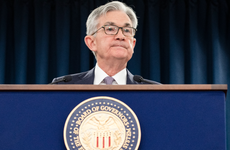Fed cuts interest rates by a quarter point for the first time in a decade
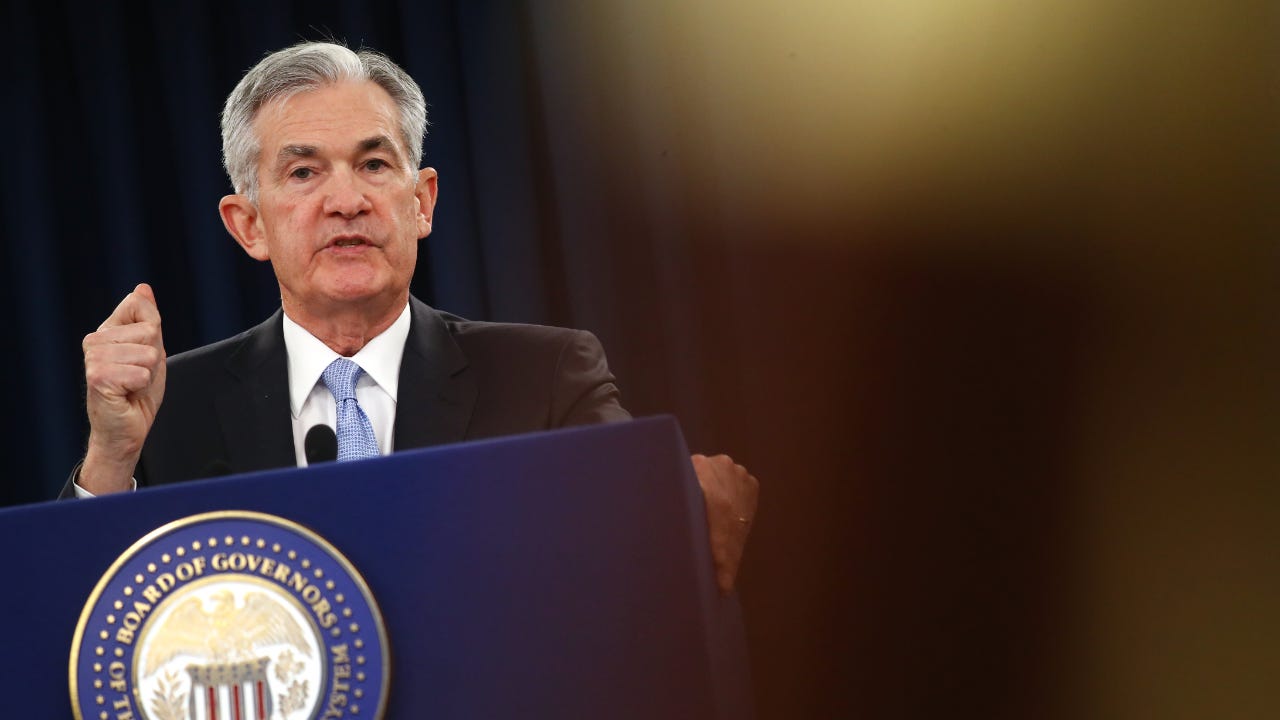
The Bankrate promise
At Bankrate we strive to help you make smarter financial decisions. While we adhere to strict , this post may contain references to products from our partners. Here's an explanation for .
The Federal Reserve’s latest move is a win for borrowers but a wake-up call for savers grappling with interest rates already at historic lows.
The U.S. central bank voted Wednesday to reduce its benchmark interest rate by 0.25 percent, or 25 basis points. That’s the first such reduction since the 2008 financial crisis, at a time when the U.S. economy was in grave danger of plummeting into the depths of the Great Recession.
The move brought the federal funds rate down to a target range of 2 percent and 2.25 percent, essentially unwinding December’s quarter-point hike. The decision was not unanimous, with Kansas City Fed President Esther George and Boston Fed President Eric Rosengren voting to leave interest rates alone.
“In light of the implications of global developments for the economic outlook as well as muted inflation pressures, the Committee decided to lower the target range for the federal funds rate,” the Fed said in its post-meeting statement of the July 30-31 gathering.
The federal funds rate decreased by a quarter percentage point and variable-interest rate products tied to the prime rate will decrease, too. That means if you’re carrying a balance on your credit card, you’ll see a slight relief. Home equity lines of credit (HELOCs) and adjustable-rate mortgages (ARMs) will also get less expensive.
But savers may start to see their returns edge down. If you’re in the market for a new CD, rates will likely drop in near-future. The annual percentage yield on your savings account may fall, too, and some banks have already started those reductions. Low inflation, however, means it’s still a good environment for savers.
At the same time, a modest Fed move won’t move the needle too drastically — for both borrowers and savers.
[READ: 5 ways the Fed’s interest rate decisions impact you]
“Today’s rate cut unwinds the last of the nine rate hikes the Fed made between 2015 and 2018,” says Greg McBride, CFA, Bankrate’s chief financial analyst. “Not only is a quarter-point move largely inconsequential to household budgets, but credit card and home equity rates are still notably higher than they were two or three years ago. On the plus side, returns for online savings accounts will remain higher than they had been for more than a decade, light years ahead of the 0.1 percent that most banks are paying, and most importantly – higher than the rate of inflation.”
Why the Fed decided to cut rates
The U.S. economy shows no immediate signs of slowing down, as it did when the Fed last lowered rates. But still, Fed officials are contending with a variety of risks that could all prove to put a damper on growth.
The Fed’s main jobs are to sustain maximum employment and keep prices stable. While the unemployment rate is at a near 50-year low, inflation hasn’t substantially reached the level where officials would like it to be.
Price pressures (as judged by the Fed’s preferred gauge) rose 1.5 percent, according to the Department of Commerce’s personal consumption expenditures index, excluding the volatile food and energy categories. Officials have a symmetric target of 2 percent — a threshold that hasn’t been met for much of the expansion.
….As usual, Powell let us down, but at least he is ending quantitative tightening, which shouldn’t have started in the first place – no inflation. We are winning anyway, but I am certainly not getting much help from the Federal Reserve!
— Donald J. Trump (@realDonaldTrump) July 31, 2019
Meanwhile, the Trump administration’s trade wars are curtailing business investment and clouding the outlook. A prominent recession indicator has also been displaying warning signs, with the 3-month and 10-year Treasury yields inverted, reflecting pessimistic sentiment among investors. The manufacturing sector is also showing weakness, and global growth continues to slow.
[READ: Winners and losers from the Fed’s rate cut]
All the while, interest rates are historic lows, meaning Fed officials have less room to fight off a downturn when it hits. By cutting interest rates before any kind of broad-based slowdown occurs, officials judge that they’re “cushioning” the U.S. economy from any downside risks. It’s similar to taking out an insurance policy.
“The U.S. economy is in solid shape, but the low level of inflation and weak global economy have prompted the Fed to administer some preventative medicine in the form of a quarter-point interest rate cut,” McBride says.
Balance sheet drawdown will end sooner
In tandem with a rate cut, officials also announced that they would be ending the balance sheet drawdown two months earlier than initially announced.
The Fed in March previously said that it would stop selling off the massive holdings of Treasuries and mortgage-backed securities purchased in the wake of the financial crisis by September of this year.
[READ: Everything you need to know about the balance sheet — and how it affects your money]
Although modest, the balance sheet normalization process tightens policy because it removes downward pressure on long-term rates. The balance sheet drawdown will now end Thursday, Aug. 1.
“As the Committee contemplates the future path of the target range for the federal funds rate, it will continue to monitor the implications of incoming information for the economic outlook and will act as appropriate to sustain the expansion,” the Fed said.
The move was “really more of a matter of consistency and simplicity,” Powell told journalists. “There’s nothing more to it than that.”
But what will the future hold?
The Fed also left the door open for future cuts, writing in its post-meeting statement that “uncertainties about this outlook remain.” But during the Fed’s press conference following its meeting, Powell pushed back against the idea that July’s quarter-point cut was the start of a long-running easing cycle.
“We’re thinking of it as essentially in the nature of a mid-cycle adjustment to policy,” Powell said, describing the reduction as an “insurance” move. “It’s not the beginning of a long series of cuts,” he added.
That message was further muddied, with Powell adding, “I didn’t say it’s just one cut” and then explaining that “long U.S. business cycles have sometimes involved this kind of event where the Fed will stop hiking, in fact, it will cut, and then go back to hiking. … It doesn’t seem like something that’s particularly likely, but we don’t know.”
“He’s in a real difficult position,” says Steve Rick, director and chief economist of CUNA Mutual Group. “The Fed doesn’t know where they’re heading. With all of these events, they’re more on the political science front than the economic front. It’s more than just pure business cycle economics. … There are so many crosscurrents mainly taking place in the world economy, but the domestic economy is doing relatively well.”
Stocks fluctuated after Powell’s jumbled comments, and the Dow closed the day down by more than 300 points. Investors are widely expecting that the Fed will ease at each of its subsequent meetings, according to FedWatch.
“The market wanted a little bit more of an aggressive stance,” Rick says.
Meanwhile, seven Fed officials through the U.S. central bank’s so-called “dot plot” have penciled in at least one more 25 basis point rate reduction, should the U.S. economy evolve as they expect. That reduction could very well be on the table for the Fed’s next meeting in September, Rick says, but it depends on how the situation evolves.
Regardless of what the future holds, Powell’s press conference left another cut possible, but took ‘a long series of rate cuts’ off the table,” says Robert Frick, chief economist at Navy Federal Credit Union.
Next steps for borrowers and savers
Navigating your next steps may seem especially difficult, with all policy options seemingly on the table. Another rate cut isn’t completely out of the picture, judging from Powell’s comments, but it’s also not set in stone.
“If you’re betting on more Fed rate cuts and are holding off on locking in a loan, you may lose that bet,” Frick says. “With the U.S. economy in good shape, the Fed may or may not follow up this cut with others.”
While borrowing costs typically edge down following Fed rate cuts, don’t expect it to be a drastic change this time around. If you have a $1,000 balance on your credit card, and rates go down by a quarter-point, that’s going to save you $2.50 annually, Frick says.
For savers, on the other hand, rates on CDs may be as high as they’re going to get for a while, Rick says. Consider locking in your rate now, and use Bankrate’s tools to find the best option for your wallet. Many savings accounts on the market, especially online banks, offer competitive yields that will still outpace inflation regardless of a rate reduction.
“If you’re looking to take advantage of a CD, these are probably as high as CD rates are going to be for the next two years,” Rick says. “If they’re lowering rates now, they’re not going to be reversing policy anytime soon.”
Learn more:
Related Articles
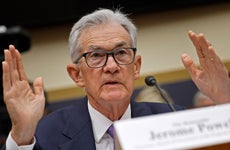
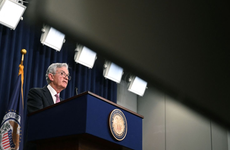
Fed hikes interest rates by three-quarters of a point to combat decades-high inflation
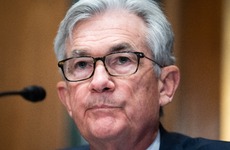
Federal Reserve raises interest rates by a half point to fight soaring inflation
